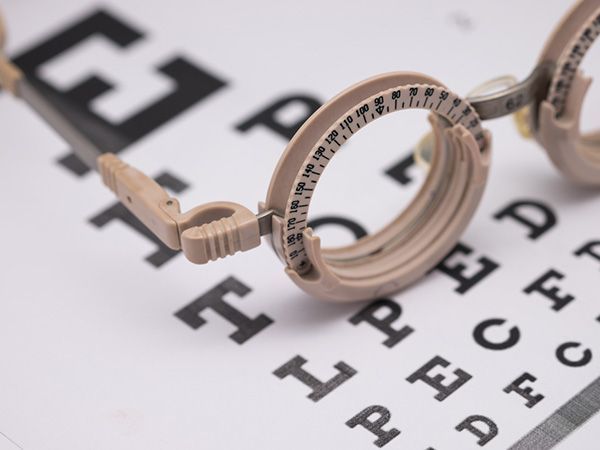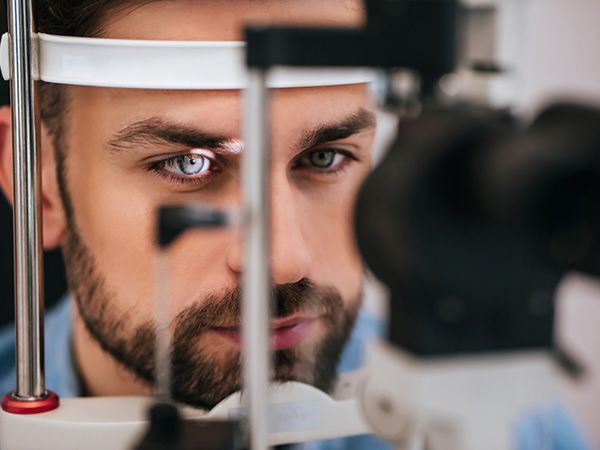What to expect: The NeuroVisual™ Exam
How is Binocular Vision Dysfunction diagnosed?
While at least 20% of the population suffers from Binocular Vision Dysfunction, almost no one knows about this condition. To make matters more difficult, people suffering from BVD have a small amount of vision misalignment not found in a routine eye exam.
Doctor Beyla has trained in the cutting-edge work of diagnosing and treating Binocular Vision Dysfunction. In addition to the standard eye examination, our doctor provides a comprehensive NeuroVisual™ Exam to uncover the patient’s misalignment and to prescribe specialized microprism lenses. These special lenses align the two images being sent to the brain, allowing for the creation of one clear image and relieving the majority of a patient’s BVD symptoms.'
Patients who are suffering from BVD feel noticeably better immediately once they begin wearing their custom-fit pair of microprism lenses. In fact, the average patient will notice a 50% reduction in symptoms by the end of their first visit. Over the next several visits, the prism prescription is fine-tuned and continues to improve and eliminate BVD symptoms.
What tests are performed during a NeuroVisual™ Exam?
A comprehensive binocular vision assessment is the best way to find out if you have binocular vision dysfunction. A NeuroVisual™ trained eye doctor can successfully diagnose BVD through a specialty binocular vision exam designed to assess your entire visual and physical system. In addition to standard eye exam tests, the eye doctor will assess the following:
Eye movement
Eye teaming and tracking
Eye focusing
Binocular fusion
Balance and gait stability
Posture and neck alignment
Visual convergence
Visual-spatial awareness
Blood pressure and heart rate
Depth perception
BVD Evaluation: What to Expect
Tense and overworked muscles in and around your eyes are caused by Binocular vision Dysfunction (BVD). These muscles are working to compensate for eye misalignment and can cause dizziness, headaches, and other unwanted symptoms. The goal is to coordinate the functioning of your two eyes to allow for comfortable vision. Your new eyeglasses will have a prescription that will relax the muscles of your eyes so that your BVD symptoms will be reduced, if not eliminated. For some patients, this first prescription will be the final one.
For most patients, however, this first prescription is just the beginning of the process. The eye muscles have been tense and overworked for so long that they not relax completely with this first prescription. You may notice over time that your symptoms, which were initially relieved, are returning. When this occurs, you will need to return to the office for an adjustment of your prescription. This process of Progressive Relaxation with prescription adjustments may occur over a 2–6-month period, with the final result being reduction, if not elimination of the initial symptoms. It is important to monitor this condition with annual eye examinations.
The NeuroVisual Examination begins by obtaining information about your general health and eye health. Then a thorough general eye examination and prism challenge are performed. Expect to spend 60-90 minutes with the doctor, and up to 2-3 hours in the office. The extended time is devoted to reducing your symptoms by refining your complex eyeglass prescription.
Following the initial office visit, Progress Assessment Visits are needed to further reduce your symptoms by making adjustments to your prescription. The first Progress Assessment Visit occurs approximately 2-4 weeks after the initial prescription is dispensed.
For some patients, the visual system needs a longer period of time to undergo Progressive Relaxation, requiring subsequent Progress Assessment Visits and prescription adjustments. With each visit and prescription adjustment, there is a continued lessening of your symptoms.
The cost of the NeuroVisual Examination and the progress Assessment Visits may be partially or completely covered by your health insurance. It is a private pay service if no insurance coverage is available and it is not covered by provincial government plans. The cost of a complex eyeglass prescription is based on several different factors: frame chosen, lenses prescribed, coatings selected etc. This initial charge may be partially or completely covered by your health insurance. Should an initial prescription require modification at the progress Assessment Visit, the lenses will be provided free of charge.
Can I still have BVD with 20/20 vision?
Yes, patients can have both 20/20 vision and Binocular Vision Dysfunction. During a routine eye exam, each eye is checked individually, but patients are not regularly assessed for how well their two eyes work together. Patients who see 20/20 have a high level of acuity in each eye, but this measurement doesn’t tell us anything about how the patient’s two eyes are working together as a team (i.e.- binocular vision).
The thorough NeuroVisual™ Exams performed in our clinic evaluate patients’ binocular vision to determine what is causing their BVD symptoms and to custom fit microprism lenses to relieve these symptoms.
For more on binocular vision dysfunction or and to get tested for BVD, take the BVDQ™, our Free 5 Minute Self Test to find out if you have BVD.


